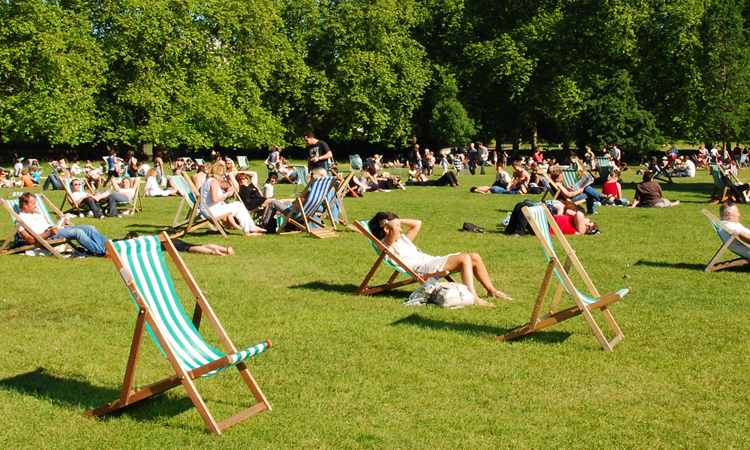How Extra Hours of Daylight Affect the Brain
Feeling more energized lately? Smiling more often or have a sudden lust for life? Spring is in the air! The feeling of excitement that comes with the change of seasons hits us every year like clockwork, and by now so-called spring fever is in full swing.
We’ve all heard of spring fever, but do you know the science behind it?
With the arrival of the spring equinox – which occurred on March 20th –comes a boost in mood and energy level, loss of appetite and reduced sleep. Researchers say that spring fever can best be described “as a combination of conflicting emotions, including a sense of comfort, warmth and renewal, amiability and lack of ambition.”
I know this is true for me. When the weather gets warmer, I find myself more distracted and daydreaming, but somehow, at the same time more motivated and energetic.
Dr Michael Terman, director of the Light Therapy Unit at the New York State Psychiatric Institute at Columbia-Presbyterian Medical Center says, ”That sense of flux – feeling better in certain dimensions, but not in other ways – may be the real definition of spring fever.”
Sunlight and serotonin

Similar to animals that hibernate in the winter, humans instinctively react to the changes in season, according to Dr Norman Rosenthal, psychiatrist, scientist and pioneer researcher of Seasonal Affective Disorder – a form of depression triggered by changing seasons. ”It would be surprising if, as creatures of nature, we didn’t have responses to the things happening to our planet,” Rosenthal said.
Sunlight and darkness release different hormones in your brain. Exposure to sunlight increases the release of serotonin – the mood boosting hormone. Darkness, on the other hand triggers melatonin – a hormone that makes you feel sleepy.
A person lacking sunlight exposure has low serotonin levels, which can ultimately lead to seasonal affective disorder. This explains the winter blues and why people are naturally more upbeat in the springtime.
The birds and the bees

It’s no coincidence that many of us are more receptive to romance, and a little friskier during this time of year. Spring is known to be the season of fertility, which is why cultures around the world host festivals and rituals to honor this time of birth and abundance.
“All of the senses are dramatically affected by the coming of spring — the warmth of the sun on your skin, the vivid colors and pungent scents, the sounds of the birds,” according to Dr Helen Fisher, anthropologist and author of Why We Love: The Nature and Chemistry of Romantic Love. “You’re being bombarded by pleasant, exciting, novel stimuli, and novelty stimulates the neurotransmitter dopamine, which in turn triggers testosterone production. Testosterone is associated with the sex drive in both women and men.”
Did you know when the sun is shining, women are more likely to give their phone numbers when approached on the street? Why? Because the brain is programmed to fall in love in the spring. Your brain naturally produces more dopamine this time of year, the chemical triggered by new experiences.
In spring, “There is so much more color, new smells, people take their clothes off and you can see more of them. And so there is a lot of new stimuli that trigger the brain and drive up dopamine, and make you more susceptible to love,” Fisher says.
Now go outside and enjoy! Fall head over heels, run a marathon, whatever it may be. Embrace the magic of spring.

Rose Caiola
Inspired. Rewired.



